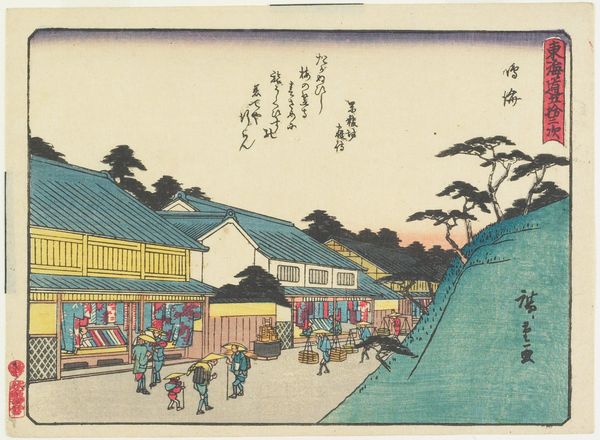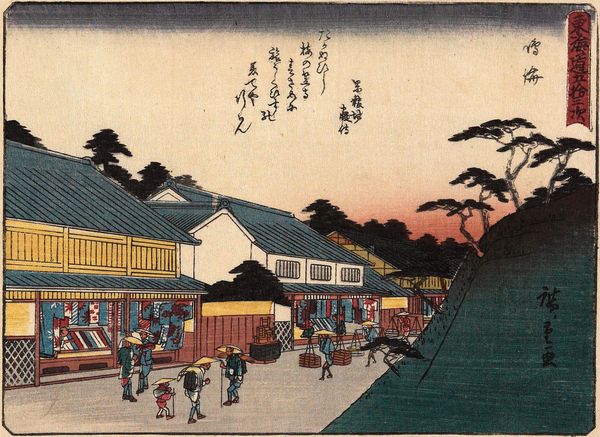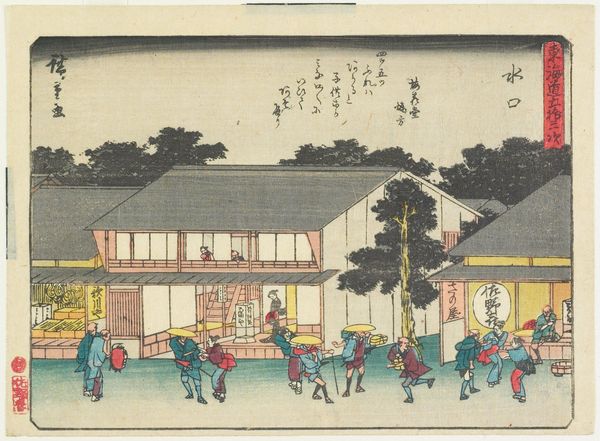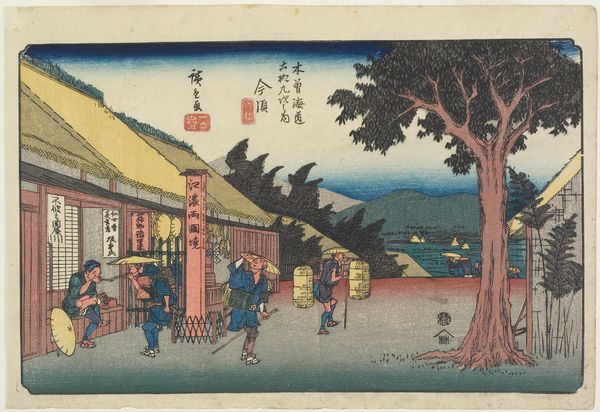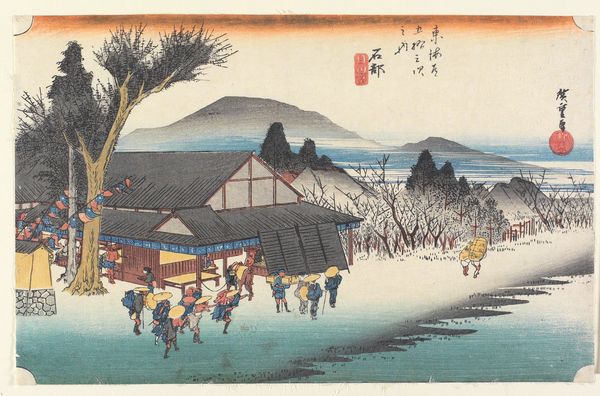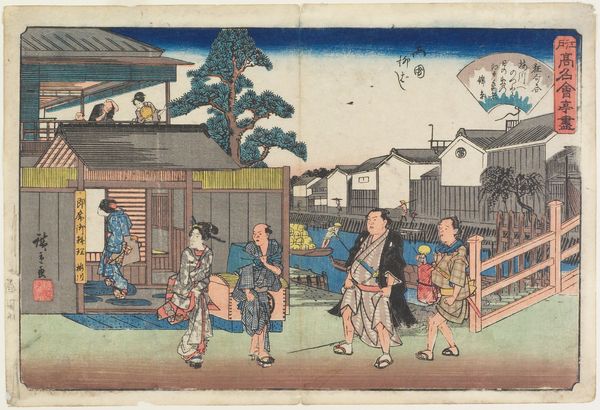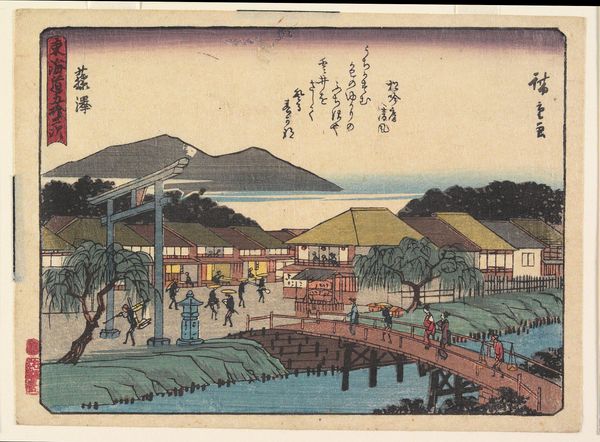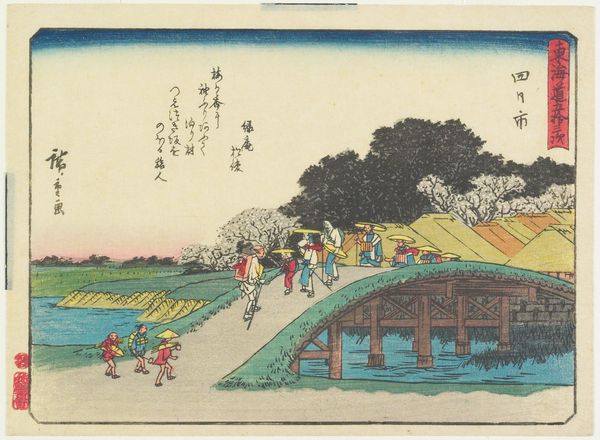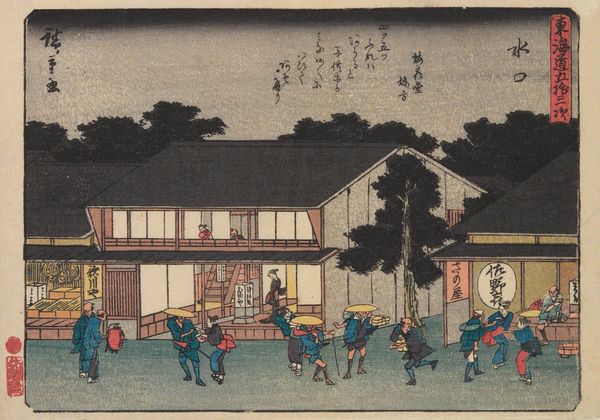
Fuchū- View of the Second Street in the Licensed Pleasure Quarter c. 1840 - 1842
0:00
0:00
print, ink, color-on-paper, woodblock-print
# print
#
asian-art
#
landscape
#
ukiyo-e
#
ink
#
color-on-paper
#
wedding around the world
#
woodblock-print
#
cityscape
#
genre-painting
Dimensions: 6 1/8 x 8 1/4 in. (15.5 x 20.9 cm) (image)6 5/8 x 8 7/8 in. (16.8 x 22.6 cm) (sheet)14 x 17 15/16 in. (35.5 x 45.5 cm) (mat)
Copyright: Public Domain
Curator: At first glance, I see a slightly melancholic snapshot of daily life under a rather prominent moon. The color palette, while vibrant, evokes a certain coolness. What is your impression? Editor: Definitely a nocturnal feel, tinged with a bit of reverie, yet brimming with life. The artist really captured a sense of community and movement despite the print's inherent stillness. The blues dominate. Curator: Indeed. This is "Fuchū: View of the Second Street in the Licensed Pleasure Quarter," a woodblock print rendered in ink and color on paper dating from about 1840 to 1842 by Utagawa Hiroshige. It is a fantastic example of ukiyo-e from Japan's Edo period currently held in the Minneapolis Institute of Art. It reflects cultural themes like the transient nature of the floating world – Ukiyo. Editor: Ukiyo-e – pictures of the floating world! I love that! Considering that the quarter was a hub for entertainment and pleasure, how does this print grapple with the ephemerality of these pursuits, juxtaposed against such a vivid, yet controlled portrayal? Does the presence of a moon signify an underlying sense of existential awareness amidst hedonism? I read such works in layers like that; it may sound weird to most. Curator: Not at all! The moon itself, a timeless symbol, hangs over this street suggesting exactly that: the unchanging presence of time against the fleeting moments of human drama. And of course, the subject itself, of figures populating a licensed quarter highlights a societal and cultural construction related to desire, gender, class, and control. Also, consider the influence of Buddhism on Japanese aesthetics! How themes such as impermanence, interconnectedness, and the illusion of reality deeply impacted artistic expression during the Edo Period. Editor: It also intrigues me that it isn't teeming with overt licentiousness; rather, we have people just walking and engaging. Could that signal how desire and satisfaction were also understood more intrinsically as a fabric of society instead of being something sidelined as "vice"? Maybe the pleasure district had another more "accepted" face in those years? Curator: It prompts that interesting reflection. It definitely gives a rather "soft" depiction, emphasizing how art captures the evolving social values and morality perceptions in a visual story over time. Editor: Yes, looking at the second street of that pleasure district under a bright moon makes me contemplate the shadows lurking behind human activities. A moment in time. Thanks for illuminating those dimensions. Curator: The pleasure was all mine! Each time looking at art from different perspectives gives another nuance on the passage of human behavior over time!
Comments
No comments
Be the first to comment and join the conversation on the ultimate creative platform.
